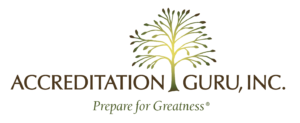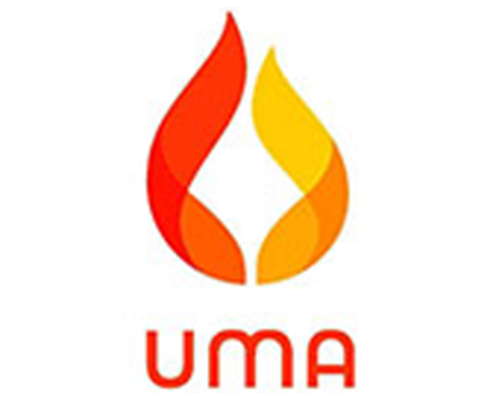As the CEO of a nationally recognized accreditation consulting company, I am often confronted with questions about the benefits of a human service provider becoming accredited or I am asked to address perceived barriers to accreditation. While earning national accreditation from organizations like The Joint Commission, CARF International, COA Accreditation (a division of Social Current)) or Accreditation Commission on Health Care (ACHC) can bring numerous benefits to behavioral health organizations, child welfare organizations, for-profit, nonprofit organizations and governmental agencies. There may be valid reasons why some might choose not to pursue accreditation, and here are my responses to these top five fears:
1. Cost: We can’t afford it!
The accreditation process can be expensive, with costs related to application fees, facilities improvements, staff training, implementing necessary changes to meet accreditation standards, and potential consulting services. Some organizations, especially those operating on tight budgets, may fear the financial burden associated with accreditation to be a barrier.
Myth Buster – You can’t afford NOT to be accredited!
Accreditation is essential for organizations due to its pivotal role in enhancing credibility, competitive advantage, and access to opportunities. It ensures regulatory compliance, improves processes, and mitigates risks while fostering trust among stakeholders. In essence, it’s a strategic investment that bolsters reputation, expands market reach, and ensures sustained excellence in operations and performance.
2. Administrative burden: We are too busy running the organization and providing services!
Yes, it requires an investment of time, money and effort. Preparing for accreditation can be time-consuming and may require significant administrative efforts. Staff may need to find time to focus on compliance with accreditation standards, which could affect day-to-day operations.
Myth Buster – The heavy lift is with the initial accreditation; after that, proactive maintenance allows for the organization to fully benefit from the process and reaccreditation efforts should be much less of a lift.
Internal financial controls, governance, HR and training, strategic planning, risk management, ethical practices, outcomes measurement, and additional areas all require attention to be ready for review by your selected accrediting body.
Note: Many organizations seeking initial accreditation may find that they need to do more preparation work on the administrative/management side of the business rather than programs and services, due to the predominate focus of state licensing reviews on an organization’s programs.
3. Staffing constraints: We don’t have enough people to devote to accreditation efforts!
Health and human service organizations, especially those in underserved areas, may struggle to allocate the necessary human resources, time, and effort to meet accreditation requirements. Staffing shortages, high turnover, or limited access to training resources can make the accreditation process challenging.
Myth Buster – Accredited organizations regularly report that becoming accredited resulted in lower staff turnover and better recruitment efforts.
TJC Study on Accreditation ROI
Accreditation signals to employees and potential hires the organization’s commitment to quality, professionalism, and continuous improvement. Meeting standards often involves investing in employee training and development, which can increase job satisfaction and career advancement opportunities. Additionally, accreditation enhances the organization’s reputation, making it more attractive to top talent seeking stable and reputable workplaces. By showcasing adherence to industry standards and a dedication to excellence, accreditation strengthens recruitment efforts by positioning the organization as an employer of choice within the industry.
SMART PEOPLE LIKE TO WORK IN WELL-MANAGED, WELL-SUPERVISED, WELL-ORGANIZED AGENCIES!
4. Already meeting state regulations – Isn’t this enough?
Behavioral health, child welfare and other human service organizations are often subject to extensive state regulations and oversight. If an organization is already in compliance with state regulations, they might question the need for pursuing additional national accreditation, especially if they perceive the state’s regulations as rigorous and comprehensive.
Myth Buster – Meeting standards is compliance with the bare minimum.
Accreditation goes beyond mere compliance, offering a myriad of benefits that elevate the organization’s operations, services offered and reputation. It often unlocks access to additional funding streams and referral sources that prioritize accredited providers, expanding the organization’s financial resources and client base. Moreover, accreditation signals a commitment to excellence and best practices. By going above and beyond licensure requirements, accreditation distinguishes the organization from competitors, affirming its dedication to superior service delivery and continuous improvement. This distinction is increasingly important to individuals, families, and communities seeking reputable and reliable services. While meeting state standards is essential, accreditation propels human service organizations to new heights by securing funding, enhancing credibility, and ensuring unparalleled quality and distinction in service provision.
5. Philosophical differences
Some organizations may believe they have philosophical or ideological differences with the accrediting bodies and fear they may not align with the accreditation standards or requirements. They might prefer to operate independently, based on their own principles and values, rather than adhering to external accreditation criteria.
Myth Buster – Rejecting accreditation based solely on ideological differences risks limiting growth, impact, and credibility.
Operating independently based on an organization’s principles and values is admirable, but rejecting accreditation due to perceived philosophical differences can be short sighted. Accreditation standards are designed to ensure the highest quality of service delivery, client safety, and organizational effectiveness. By aligning with these standards, organizations demonstrate their commitment to excellence and accountability, which can enhance credibility and trust among stakeholders. Accreditation also provides an objective framework for self-assessment and continuous improvement, which will help them identify strengths, weaknesses, and areas for development.
The accrediting bodies research and develop standards in a way to allow for unique programs and services; they are not written to standardize program delivery. It is possible to find an accrediting body that aligns with your values! It’s essential for organizations to carefully weigh the benefits and drawbacks of an accrediting body before making a decision, considering how it aligns with their mission, vision, values, and goals for serving their communities. At Accreditation Guru, our experts will gladly help you find the right fit.
Ultimately, the decision to pursue or not pursue national accreditation should be carefully considered in the context of the organization’s unique circumstances, mission/vision, and priorities. This decision will certainly have implications for funding, reputation, and the ability to attract clients. It’s essential to weigh the potential benefits of accreditation against their specific circumstances and priorities before making a final decision.








 Accredited by
Accredited by 





